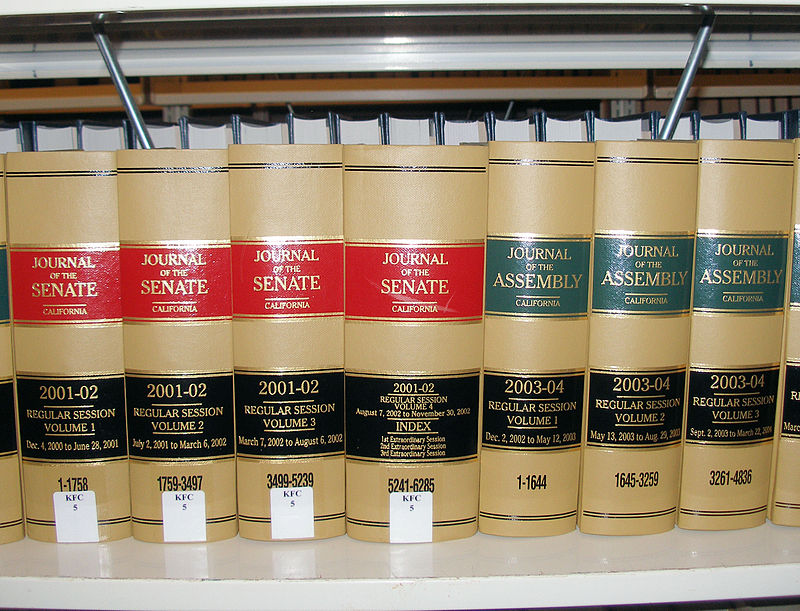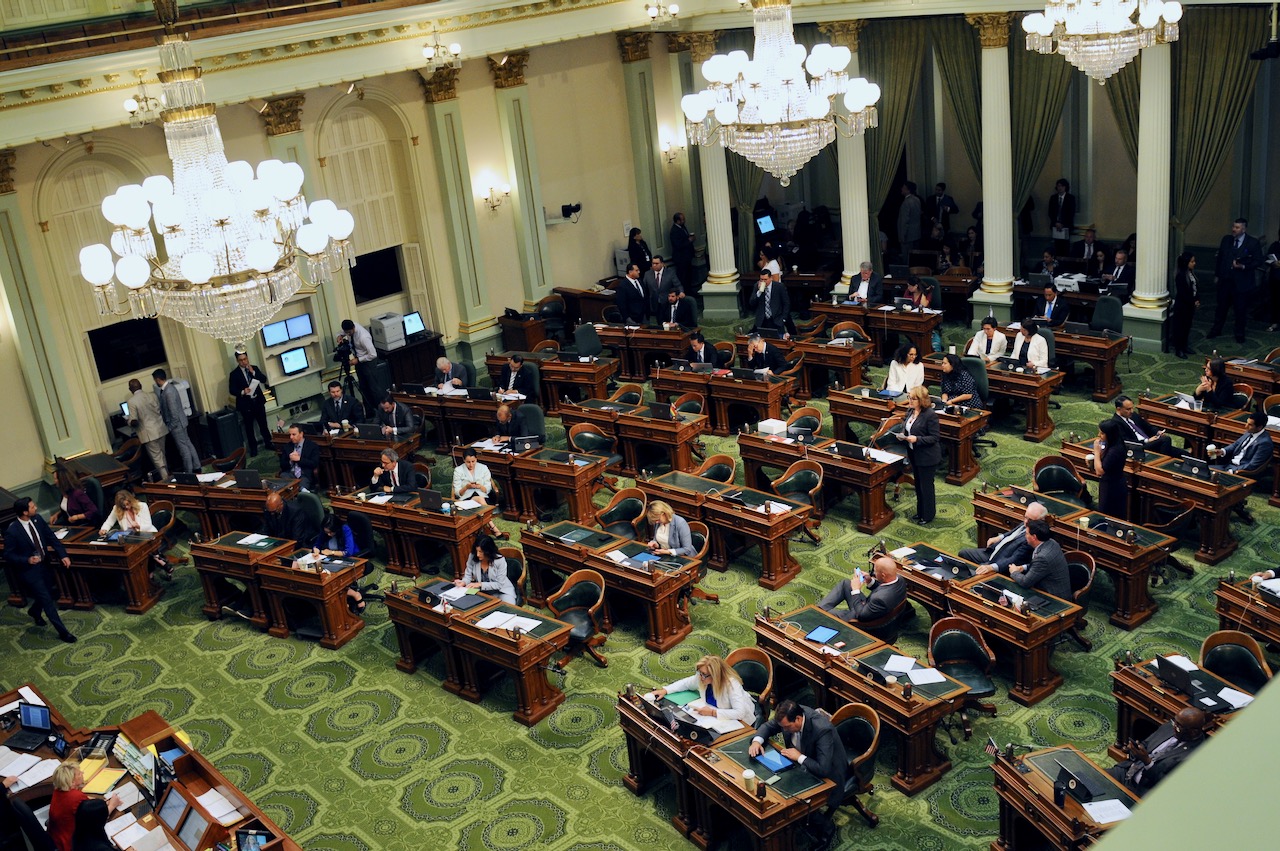
Journals of the California Legislature. (Photo: Wikipedia)
Legislative Floor Procedures
There are rules in place for ensuring an orderly management of bills on the respective floors
By Chris Micheli, February 12, 2020 6:15 am
In both houses of the California Legislature, there are specific procedures for considering legislation on the Floors of the Assembly and Senate. There are rules in place pursuant to the Joint Rules, as well as the respective Assembly and Senate Rules, for ensuring an orderly management of bills on the respective floors.
In both houses, the leadership teams generally prefer to know when legislators plan to take-up bills on the floors, particularly if they are controversial measures. For example, in the Assembly, legislators are asked to inform the Speaker’s Floor Unit staff whether the legislator intends to take-up any bill that is eligible for floor action, generally at least a day in advance of the schedule floor session. In this way, the Speaker’s staff know whether the bill’s author plans to take up the bill for debate and a vote, or offer amendments, etc.
It is also important for the bill analyses to be available to the legislators so that they can be properly informed prior to considering a bill that is pending on the floor. In both houses, the Democratic and Republican staff prepare floor analyses. For example, in the Assembly, the floor analyses are prepared by the Speaker’s Office of Research and Floor Analysis and the Assembly Republican Caucus’ Office of Policy and Budget.
What type of information is usually provided by legislative offices when their bills are being analyzed for floor action? Among other things, they may be asked for background on the bill, including a fact sheet, staff contact information, summary of support and opposition, including a list of individuals and organization that have sent letters for or against the bill. Sometimes these letters are sent directly to the committee that considered the bill, rather than directly to the author. In these instances, it is important for the legislator’s staff to get copies of those letters.
They also generally ask for an author’s statement in support of his or her bill. In both the Assembly and the Senate, the floor analyses are usually written by the first committee of reference. The Senate Secretary’s Office of Floor Analysis and the Chief Clerk’s Floor Analysis are non-partisan and official analyses of the bill. The positions stated are taken from committee records of support and opposition for the bill.
When bills are pending in the other house (i.e., after they have passed their house of origin), floor managers are required to be used. In other words, ABs on the Senate Floor and SBs on the Assembly Floor need a legislator of that house to take-up the bill on the respective Floor. This is a necessary hurdle and should be done prior to the bill reaching the floor of the other house. Once the Floor Manager has been designated, then the bill author’s staff needs to notify the appropriate Desk so that the Floor Manager’s name will be listed in the Daily File.
It is important to remember that, during the weeks preceding a deadline, bills on the Third Reading File that are passed on file two or more times may be sent to the Inactive File. The Assembly Chief Clerk and the Senate Secretary provide valuable information at key times during the legislative
- Joint Debtors in California - December 27, 2025
- Division of Property in California - December 27, 2025
- Agency Adoptions - December 26, 2025




